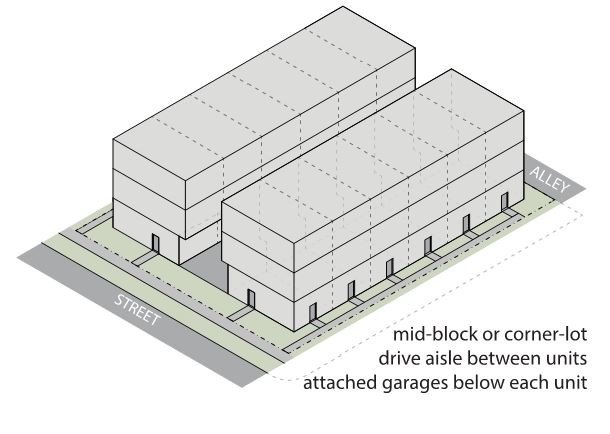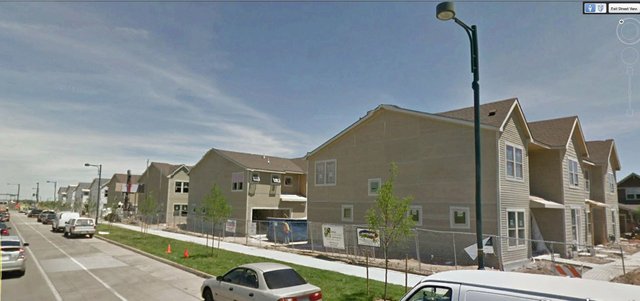On Making Housing Expensive

Originally published on www.denvelibertarian.com
Discussions surrounding the rising costs of housing frequently emphasize that zoning laws and regulations have a negative impact on the total number of available units in a given area, but zoning laws in and of themselves are not the only thing to blame. The crux of this issue is two-fold, with existing residents demanding limitations on the amount and type of housing that can be built in an area and a willing government eager to implement and enforce ever expanding regulations. Oddly, those who claim to be preserving the character of their own neighborhood are often quite happy to push for re-zoning and planning of other neighborhoods, ultimately hurting the very people they are claiming to help.
There are a number of reasons that contribute to rising housing prices in any given market, with the most basic being an increase in demand occurring at the same time as a limited supply. It’s no revelation that over the course of the last several decades there has been an explosion in the number of rules and regulations governing what can be built in certain areas, but what is surprising is the tacit approval of many to just accept the rulings of planning and zoning boards, which often directly contribute to a dwindling supply of housing options. Prior to WWII, specifically with regards to housing, a myriad of options were available to both renters and owners regarding the types of development that they could expect to encounter in any given city. Chief among those options were residential hotels, boarding houses, carriage houses, mother-in-law cottages, or simply renting a portion of a house. What was once commonplace, spontaneous and organic has now become illegal and something to be prevented and controlled by government, under the auspices of safety, equity and the greater good of the neighborhood.
A prime example of using the full force of government to one’s own benefit via zoning regulations can be found in Denver, where a recent zoning change has outlawed slot home construction under the guise of the betterment of the neighborhood fabric. The purported goals of the zoning amendment include providing for public outreach to identify “problem developments,” advise on design alternatives and to identify tools that can be used to promote predictable design outcomes (so much for diversity, eh?). That “predictable design outcome” phrase reeks of Progressive Era utilitarian efficiency par excellence, where everything is scientifically analyzed, planned out and homogenized. Absent from the purported goals of the amendment is any indication that these “predictable design outcomes” will adversely affect the prices and availability of housing in Denver. It is often easy to speak of these outcomes in the abstract, but harder to see these zoning regulations in a real-life manner. Bear with me as I ask you to take a look at an image from the Denver zoning code. The first is an image from the code as it existed before the slot home amendment and the second is a street view photo of what this building form actually looks like. Of course, as with all things code and zoning related, there are a number of variations and paths to conformity as to how any given slot homes could be configured, but this is one of the more typical arrangements.


Simply put, this type of configuration allows for a property owner or developer to maximize the available units on a given plot of land, working within the provisions of the previous zoning code, of course. The slot home amendment, however, makes this type of development illegal and inherently reduces the total number of available units on a lot. It is worth noting that this type of slot home development had typically been constructed in master planned areas, in sections reserved for “affordable” housing. The amendment effectively “downzones” these lots, as the property owner is now not allowed to develop the land in the manner in which it was assumed when the land was originally purchased.
This article should not be taken as wholesale support for slot houses to be built everywhere, that’s an equation best worked out within the housing marketplace. It’s very possible that a slot house development is the only thing that could sell at certain locations. By the same token, it’s also possible that a row house, or some other type of development would have made more sense. There are countless factors at play and a ban on this type of development is detrimental to the housing situation in Denver, writ large. Unfortunately, these types of knee-jerk zoning changes have become typical with city planners all too eager to bend to the demands of holier-than-thou NIMBYs who would prefer to limit the actual housing options for those in a lower income bracket. These same people then take to social media and decry the resultant lack of housing, indignantly shouting: “something must be done” about those greedy capitalists who are not developing enough affordable housing. This type of zoning regulation ultimately benefits existing owners at the expense of first time homebuyers and lower income families. Another example of seemingly well intentioned residents adversely affecting housing availability is Denver’s new Green Roof Ordinance, as developers will be quick to note that green roof requirements do not apply to multi-family dwellings four stories or less (more on that here).
It’s a folly of planning to portend to know what the best type of housing is for any specific area, given the diversity of renters, homeowners, housing development options and funding availability. As Ryan McMaken put it, in a recent Mises.org article, “it’s impossible to know the answer without allowing property owners and consumers to function within the marketplace. Property owners will attempt to build housing where they feel it will best satisfy market desires. Consumers will attempt to move where housing best suits their desired lifestyle.” The attempts at planning out every aspect of housing via zoning regulations under the guise of creating affordable options and maintaining the neighborhood fabric is causing the problem it is attempting to solve. Moreover, when subsidized housing does make it to market, it often has jumped through so many hoops and government red tape that the number of available units is still woefully inadequate, as developers recognize the difficulties and don’t propose as many “affordable” units, yet the calls for more regulation roll on. As Jeffrey Tucker succinctly reminds us in a recent AIER article, “here is a principle to use in all aspects of economic policy: When you find a good or service that is in huge demand, but the supply is so limited to the point that the price goes up and up, look for the regulation that is causing the high price. This principle applies regardless of the sector...” We would do well to question any government planning efforts and promote a marketplace of numerous and various types of housing to respond to the desires of would-be homeowners and tenants.
Aside: If you’re a glutton for pain, or should you want to delve into the absurdity of how far down into the planning vortex we have allowed ourselves to fall, the full text of the zoning amendment can be found here. There’s even a section that defines where you can put your mailbox, if you find yourself needing some guidance.
Congratulations @denlibertarian! You have completed the following achievement on the Steem blockchain and have been rewarded with new badge(s) :
Click here to view your Board
If you no longer want to receive notifications, reply to this comment with the word
STOPTo support your work, I also upvoted your post!
Do not miss the last post from @steemitboard: